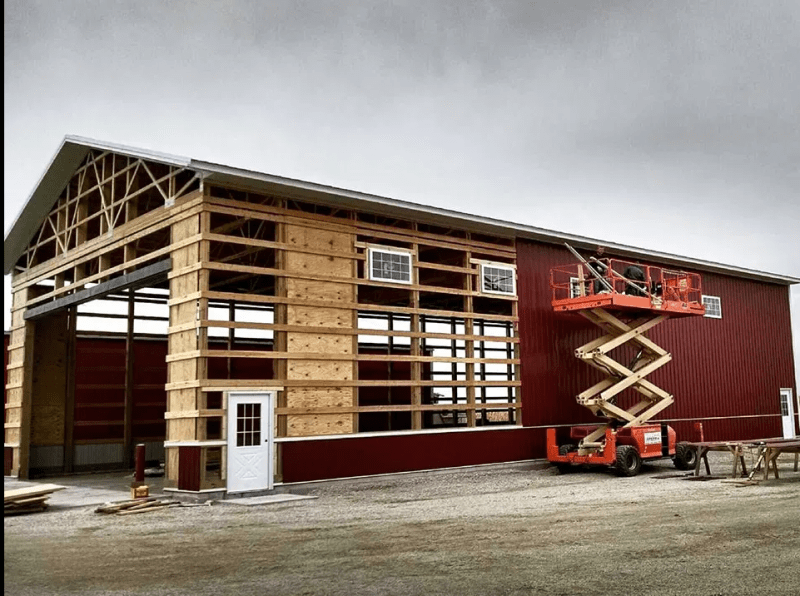Woody1515
Structural
- Apr 13, 2017
- 72
Hello again everyone,
I have a contractor who is building a large shed, using typical frost walls for the foundation, slab on grade for the floor and wood studded walls (14’ tall) and trusses. They are trying to build this thing as cheap as possible...
For the walls, they are pushing for not using any sheathing. Instead, they are arguing that 2X4 strapping @ 24” O/C that they will use to attach the tin siding to will act as the lateral support system. They said they have “done this multiple times before” and have had no problems, but I have some doubts. The walls would simply be studs, 2X4 strapping on the exterior and then the tin siding. No interior drywall or other finishes. In your opinion, will this strapping be able to adequately replace the sheathing? Is the strapping able to prevent the stud from buckling about the weak axis, the same way sheathing would?
They said they could add some 2X4 diagonal bracing on the inside of the walls if required. I can see that helping the lateral stability of the entire building (although minimally), but I don’t think that solves the problem of ensuring the studs are adequately braced against buckling.
Essentially, I am looking for any potential alternatives to plywood or osb sheathing that will a) prevent weak axis lateral buckling if studs and b) lateral stability of entire building.
Thanks in advance!
I have a contractor who is building a large shed, using typical frost walls for the foundation, slab on grade for the floor and wood studded walls (14’ tall) and trusses. They are trying to build this thing as cheap as possible...
For the walls, they are pushing for not using any sheathing. Instead, they are arguing that 2X4 strapping @ 24” O/C that they will use to attach the tin siding to will act as the lateral support system. They said they have “done this multiple times before” and have had no problems, but I have some doubts. The walls would simply be studs, 2X4 strapping on the exterior and then the tin siding. No interior drywall or other finishes. In your opinion, will this strapping be able to adequately replace the sheathing? Is the strapping able to prevent the stud from buckling about the weak axis, the same way sheathing would?
They said they could add some 2X4 diagonal bracing on the inside of the walls if required. I can see that helping the lateral stability of the entire building (although minimally), but I don’t think that solves the problem of ensuring the studs are adequately braced against buckling.
Essentially, I am looking for any potential alternatives to plywood or osb sheathing that will a) prevent weak axis lateral buckling if studs and b) lateral stability of entire building.
Thanks in advance!


